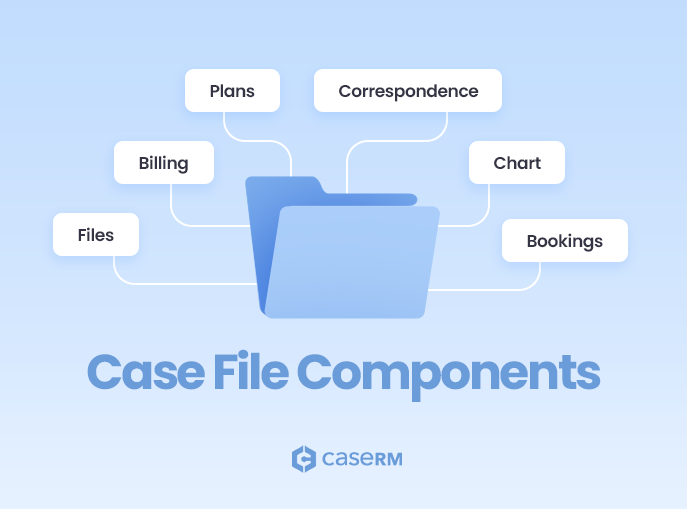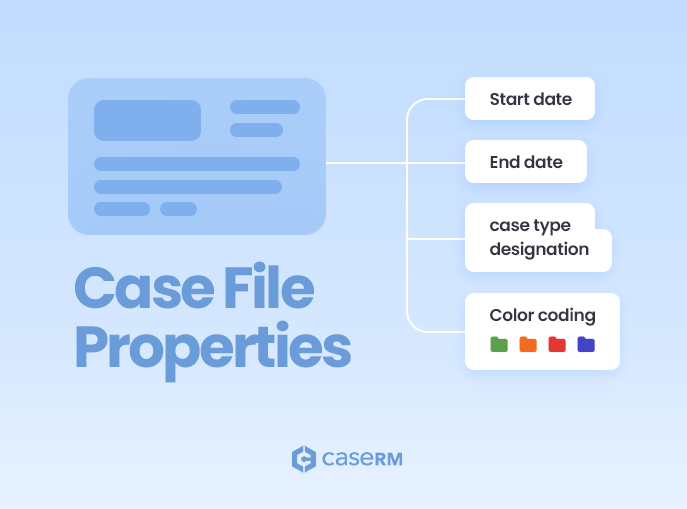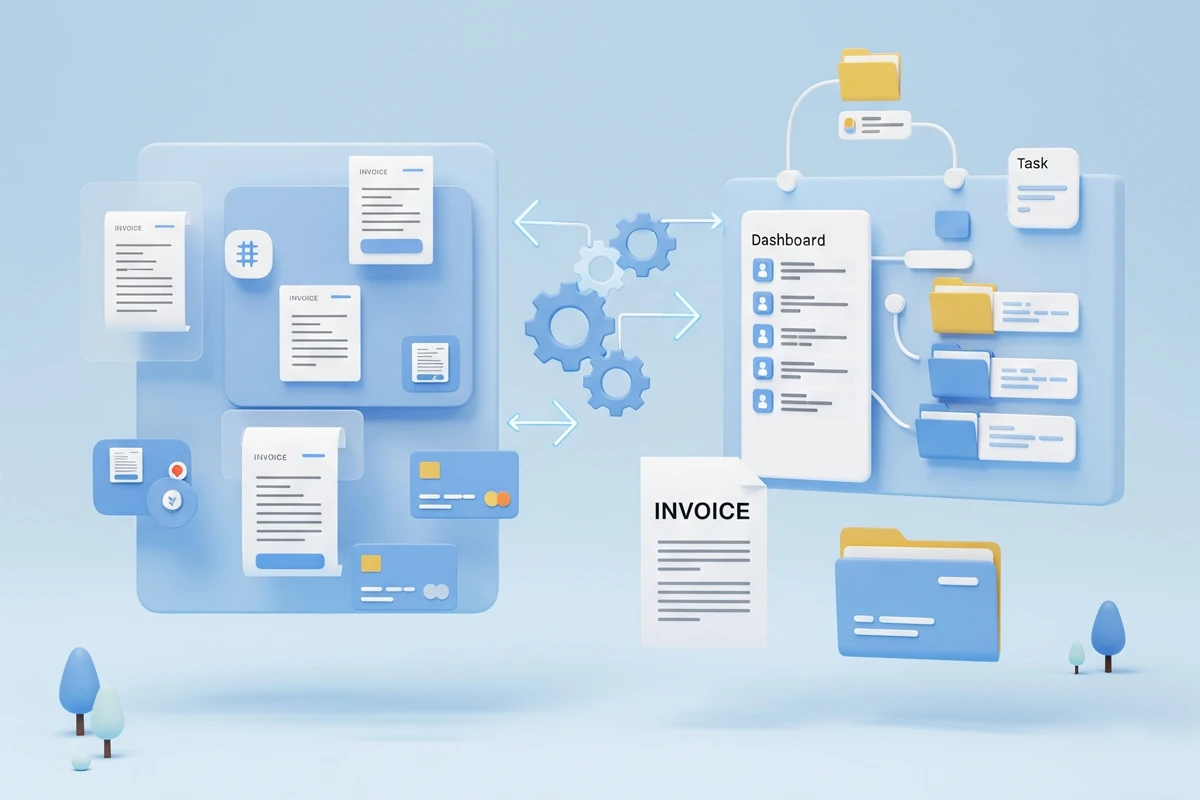When organizing and tracking a client’s journey through treatment, the difference between managing a client and managing a case file isn’t just semantic – it’s fundamental.
In many healthcare and rehabilitation settings – particularly those involving case management, physical therapy, and mental health – professionals often focus on the person receiving care. But what’s often missing from most practice management software systems is a structured way to manage the context of care – what we call the case file.
Contents
What Is a Case File?
Where Most Systems Fall Short
Core Components of a Case File
Why This Structure Matters
Managing Clients Is Not Enough — You Need Case Management
CaseRM: Built Around Case Files
What Is a Case File?
Think of a case file as a well-organized folder – digital or physical – created for a single episode of care. While a person might be your client or patient over many years, a case file represents the scope of a particular situation, such as:
- A motor vehicle accident (MVA) injury
- A workplace injury under Workers’ Compensation (WCB/WSIB)
- A slip and fall injury
Each of these deserves its own trackable lifecycle, documentation, bookings, billing, and closure process. This structured approach is foundational to adaptive case management, which emphasizes flexibility, clarity, and context-specific tracking.

Where Most Systems Fall Short
Most practice management software systems in the healthcare space are built around the concept of managing clients or patients. When a new episode of care arises, users are often left with two poor options:
- Duplicate the client/patient – resulting in multiple profiles for the same individual
- Mesh everything together in one profile – combining documents, notes, and billing across unrelated cases
Neither approach works well. Duplicating client records leads to fragmented data, duplicated effort, and potential billing errors. Mixing everything together, on the other hand, creates an unmanageable tangle of information that:
- Confuses case managers trying to track progress
- Overwhelms office administrators during billing or reporting
- Disorients therapists trying to understand treatment context
The result? Reduced efficiency, compromised documentation integrity, and a heightened risk of non-compliance – especially in regulated environments.
Core Components of a Case File
A well-structured case file – powered by adaptive case management – organizes all relevant details for a specific episode of care, including:
- Client/patient demographics and intake details
- Payers – entities responsible for covering expenses within the case
- Documents and attachments (e.g., referral letters, medical imaging, scanned files, third-party assessment reports)
- Billing items including service charges, invoices, payments, and outstanding balances
- Treatment plans and goals, customized to the case
- Bookings, including scheduled, arrived, no-show, and canceled visits
- Clinical notes and progress charts
- Correspondence, such as insurer communications or legal letters
Each case file also includes key properties:
- A start date (intake)
- An end date (discharged or closed)
- A case type designation (e.g., Private, MVA, WCB, Slip & Fall)
- Color coding associated with the case type for easy visual reference

This modular organization is essential to supporting adaptive case management, enabling professionals to respond dynamically to changes in each episode of care.
Why This Structure Matters
A case-centric approach, enabled by adaptive case management, transforms healthcare practice management in three key ways:
1. Multiple Cases, One Client
A single client may experience multiple unrelated incidents. For example, a patient might sustain a low back injury from an MVA in March, then seek treatment for a workplace shoulder injury in July.
Keeping these episodes in separate case files ensures:
- Cleaner billing processes
- Accurate reporting for insurers
- Proper continuity and closure of each care episode
2. Compliance and Audit-Readiness
Insurers, legal representatives, and regulatory bodies often require case-specific documentation. A case-based structure makes it easy to export the full history of a specific episode – protecting unrelated client data and simplifying compliance.
3. Better Workflow and Team Coordination
When your team works from clearly defined case files, coordination becomes significantly easier. No more guessing what’s relevant or where information belongs. Everyone – from the front desk to therapists to billing staff – is on the same page.
Managing Clients Is Not Enough — You Need Case Management
Managing clients is about relationships. Managing case files is about organizing care episodes effectively, legally, and efficiently.
By adopting a case-centric model of practice management, healthcare professionals elevate their workflows from reactive to proactive. It’s not just about having all the information – it’s about having it in the right place, at the right time, for the right reason.
This is the essence of adaptive case management in clinical settings.
CaseRM: Built Around Case Files
At CaseRM, we designed our platform with this distinction in mind. Rather than retrofitting case management into a client-centric model, we built our system around the reality that most professionals work with cases first, not just people.
Our practice management software is structured to reflect how real-world care happens – organized, flexible, and compliant.
- Full visibility per case
- Clear separation of unrelated episodes
- Streamlined billing, reporting, and communications
- Full License for Everyone — no extra fees for additional users



